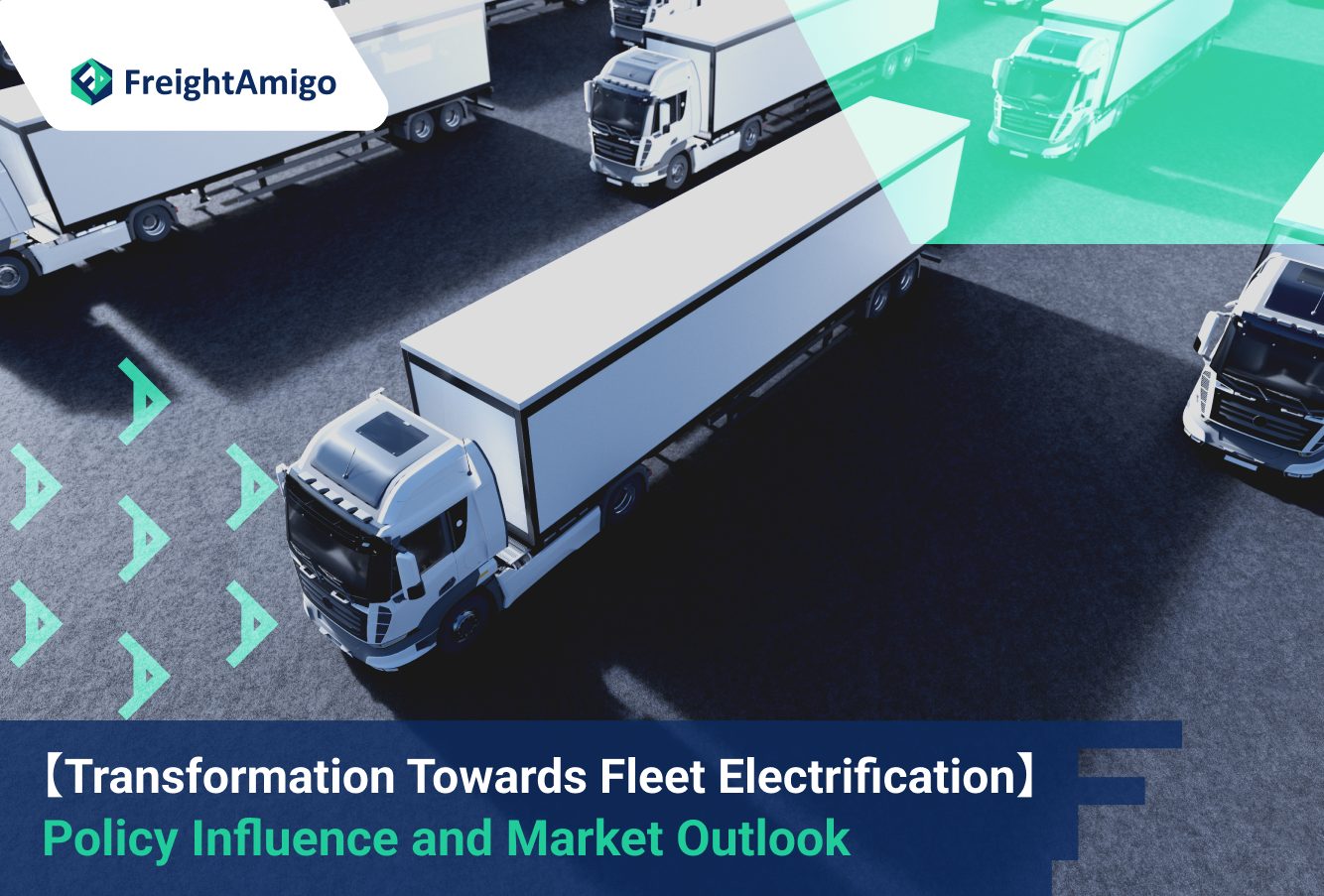The global transition to electric vehicles (EVs) is accelerating, driven by a global push to reduce greenhouse gas emissions and dependence on fossil fuels. A significant part of this transition is the move towards fleet electrification – the process of replacing traditional internal combustion engine (ICE) vehicles in a fleet with electric vehicles. This article explores the influence of government policies on fleet electrification, evaluates the current market scenario, and presents an overview of the future prospects for the EV industry.
Latest update on 29 January, 2024 by Aiden Ng– Marketing Analyst at FreightAmigo
Want to compare the best Express, Air Freight, Sea Freight, Rail Freight & Trucking rates so as to have better control on cost?
The Policy Landscape for Fleet Electrification
Government policies play a vital role in shaping the landscape for fleet electrification. Policies such as subsidies, tax incentives, and investment in charging infrastructure are crucial catalysts driving EV adoption.
Subsidies and Tax Incentives
Government interventions in the form of subsidies and tax incentives have been instrumental in promoting EV adoption. These financial incentives effectively decrease the upfront cost of EVs, making them a more competitive alternative to ICE vehicles. Several countries offer tax credits or incentive programs to lower the cost of electric vehicles. For example, the U.S. federal government offers tax credits of up to $7,500 for purchasing or leasing a new electric car, making EVs a more appealing option for many potential buyers.
Investment in Charging Infrastructure
A key challenge for the mass adoption of EVs is the absence of an extensive charging infrastructure. Governments worldwide are investing in the enhancement of charging infrastructure, including the installation of charging stations at strategic locations and offering incentives for EV owners to install home charging points. Such initiatives make owning an electric vehicle more feasible, enabling EV owners to recharge their vehicles conveniently.
Creating Awareness and Providing Educational Resources
Government initiatives also focus on creating awareness about EVs and providing educational resources to help consumers make informed decisions. Promoting the benefits of EVs through media campaigns, hosting events for test-driving EVs, and providing information about incentives, financing options, available models, and maintenance tips are some of the measures taken by governments to ease the transition to electric cars.
The Impact of Government Policies on Electric Car Ownership
Government policies are significantly influencing the uptake of electric cars across the globe. By offering financial incentives, investing in infrastructure, and introducing regulations that promote the use of EVs, governments are making electric vehicles more accessible and attractive, thereby driving their adoption worldwide.
Reduction in Carbon Emissions
One of the most significant benefits of electric cars is their potential to reduce carbon emissions. Since EVs produce zero emissions, they contribute to a cleaner environment and help combat climate change. Government policies that incentivize the purchase of EVs can help reduce the overall carbon footprint of the transportation sector.
Lower Operating Costs
Electric vehicles are generally cheaper to run than conventional cars. They require less regular maintenance than traditional cars and the cost of electricity is typically lower than gasoline. Government incentives that reduce the upfront cost of EVs can therefore lead to significant cost savings for consumers in the long run.
Quieter and Smoother Ride
Electric cars offer a quieter and smoother ride compared to traditional cars due to their electric motors. This can enhance the overall driving experience, particularly in busy urban areas.
The Role of Government in Boosting Electric Car Sales
Several governments worldwide have taken significant steps to boost electric car sales. These measures include offering significant fiscal incentives to spur the initial uptake of electric light-duty vehicles (LDVs) and underpinning the scale-up in EV manufacturing and battery industries.
Fiscal Incentives
Significant fiscal incentives have catalyzed the initial adoption of electric light-duty vehicles (LDVs) and underpinned the scale-up in EV manufacturing and battery industries. These incentives – primarily purchase subsidies, and/or vehicle purchase and registration tax rebates – were designed to reduce the price gap with conventional vehicles.
Emission Standards
Another significant policy driver of EV adoption is the gradual tightening of fuel economy and tailpipe CO2 standards, which has augmented the role of EVs in meeting these standards. Today, over 85% of car sales worldwide are subject to such standards.
Publicly Accessible Chargers
The availability of convenient and affordable publicly accessible chargers is becoming increasingly important as EVs continue to scale up. To help address this, governments have provided support for EV charging infrastructure through measures such as direct investment to install publicly accessible chargers or incentives for EV owners to install charging points at home.
The Growth of Electric Car Sales
Thanks to these government initiatives, electric car sales have been on the rise around the world. As the demand for electric cars grows, new policies that focus on driving down the cost of batteries, charging infrastructure, and production will be needed to ensure a sustainable future.
The Future of Fleet Electrification
The future of fleet electrification looks promising, with governments worldwide continuing to invest in policies and infrastructures that encourage electric car ownership. As the technology continues to advance, along with the charging infrastructure and performance of EVs, purchasing electric vehicles is becoming increasingly accessible and cost-effective. By promoting the adoption of electric vehicles, governments can boost the growth of cleaner transportation, reduce emissions, and improve public health while saving money in the long run.
Conclusion
In conclusion, government policies play a pivotal role in driving fleet electrification, making electric vehicles a more viable and attractive option for both individual and corporate use. The transition to a cleaner and more sustainable future hinges on the continued support and investment by governments in the policies and infrastructures that encourage electric car ownership. The power to the people, and power to the planet!
There are different options for cargo transportation. If you want to choose the most convenient and suitable solution, it is best to have the full support of logistics experts! If you are planning to ship goods overseas, please go to the FreightAmigo page for inquiries.
If you have any inquiries on logistics/supply chain, feel free to contact FreightAmigo now:
Chat with us online | Hotline: +852 28121686 | WhatsApp: +852 27467829









































